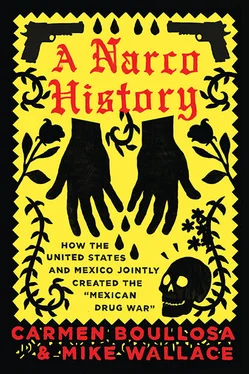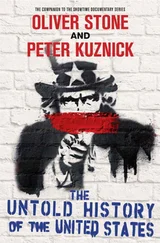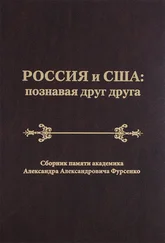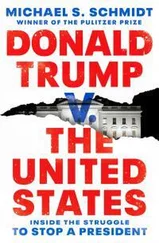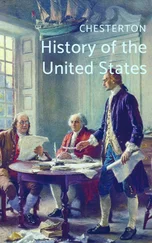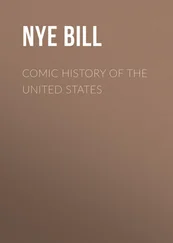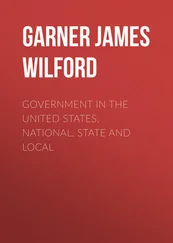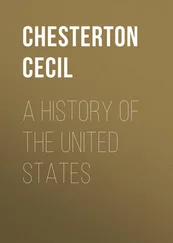In December the Austrians announced that DNA found on one of the bone fragments was that of Alexander Mora Venancio, one of the Forty-Three. The Argentinian forensic team accepted the analysis, but noted that as they had not been present when the remains had been discovered, they could not ratify the government’s assertion that the burning had taken place at the dump.
In January 2015, Attorney General Murillo Karam declared the case closed, arguing that no new information had been unearthed that would require revising the official narrative. Many of the parents insisted that, given the absence of any forensic evidence as to the fate of forty-two of the forty-three missing students, their sons might still be alive. They called for turning the case over to an international criminal tribunal.



The story of the Ayotzinapa students has shaken Mexico profoundly. Immense demonstrations have taken place all across the country. Students at universities and technical schools have been particularly vociferous, appalled at the fate of their fellow students, but artists, actors, writers, lawyers — one trade and profession after another — have also marched in solidarity. Catholic bishops have spoken out (as has Pope Francis). Over the six agonizing weeks from massacre to unmasking, hope faded but anger grew, and with it the size and fury of protests against municipal, state, and federal authorities. Not only have individual politicians been discredited to a remarkable degree, but the leading political parties have also been bitterly denounced. The PRD, the major left opposition party, has been badly tarnished, as both Abarca and Aguirre ran for office on their ticket. Peña Nieto’s ruling PRI party has been attacked for its belated concern with the students’ fate, and more broadly for its inability or unwillingness to crack down on criminality; huge citizen assemblies have called on the president to resign. Most of these protests have been peaceful, but some have flared into violence, as when the doors of the Presidential Palace in Mexico City were set ablaze, or when Acapulco International Airport was seized. This led critics to denounce the disorder, and to dismiss the Ayotzinapans themselves as radical troublemakers not worth all the uproar. But the overwhelmingly predominant responses have been shock, shame, sadness, and outrage.
This reaction is something of a mystery. Not because the massacre does not warrant such responses, but because it is only the latest in a lengthy sequence of horrors. Apart from the identity of the victims — poor rural youth determined to improve themselves and their communities by becoming teachers — there is not a single aspect of the killing spree, and the nexus of corruption and criminality that spawned it, that has not been commonplace in Mexico’s recent history.
Mass murder (in one instance producing three hundred corpses); grisly torture (one victim’s face was skinned and sewn onto a soccer ball); collusion between mayors, governors, and militarized drug traffickers; rampant kidnapping and extortion; police on the payroll of cartels possessed of vast drug profits available for bribery; the wholesale arrest of police departments; a criminal justice system that all but guarantees criminals impunity from prosecution; the inefficiency or disinterest of higher political officials; and even the eruption of protests from civil society — all these have been routine in the last dozen years.
Forty-three bodies? Since 2000, more than one hundred thousand have been killed. Mass graves? Tens of thousands have been disappeared, many likely moldering in such pits. Horrific executions? Roughly two thousand of the hundred thousand suffered death by decapitation.
So, why now the nationwide explosion? In part, it was the militant determination of the parents not to let this latest atrocity get lost in the endless slipstream of murder and mayhem. In part it was precisely because of the long train of abuses that had preceded it — the patently metastasizing cancers of corruption and criminality — of which people had finally had enough. “We are angry because this is not an isolated event,” said one woman demonstrating on behalf of the Forty-Three. “Many of us are parents and we see very ugly things in this country that we want to fight.”
This is a book about that long train of abuses. It seeks to provide readers, especially those in the U.S., with a general context, without which this particular outrage is largely incomprehensible. Much of our story will focus on what is generally known as the Mexican Drug War, a phenomenon conventionally dated from 2006, when the Mexican military was sent into action against powerful drug cartels exercising effective control over vast stretches of Mexican territory. Most Americans know that something horrible has been going on below the Rio Grande during the past decade (2006–2015). They have seen the occasional stories detailing blood-drenched massacres, the capture of drug kingpins, the murder of journalists. They may have read U.S. State Department Travel Warnings alerting them that murder and kidnapping await the unwary (and the wary as well). But it has been difficult to get a grasp on the drug war’s extent or nature.
It is our contention that just as the story of the Forty-Three needs contextualization, so does the drug war itself. We suggest that it, too, is inexplicable if one scrutinizes only the narrow time frame in which it is customarily confined. That decade has a lengthy and complicated backstory that needs to be situated in the preceding century (1914–2015) of which it was the sanguinary dénouement.
In addition, we argue that the very term “Mexican Drug War” is profoundly misleading, as it diverts attention from the American role in its creation. Americans understandably view the blood-drenched bulletins from below the Rio Grande as dispatches from a different world. They are reports from a distant battlefield, limning a Mexican Drug War — presumably a conflict of Mexico’s making, hence Mexico’s responsibility alone. But we believe the term to be a misnomer, as the complex phenomena to which it refers were jointly constructed by Mexico and the United States over the last hundred years.
Americans are probably aware that the vast bulk of illegal drugs consumed in the United States — cocaine, heroin, marijuana, and methamphetamine — arrive from Mexico. Some are also aware that the vast bulk of weaponry used by drug cartels in their battles with each other and with the Mexican state flows south from the U.S.A. But what is perhaps less appreciated is how much the present situation dates to America’s long-ago coupling of a voracious demand for drugs with a prohibition on their use or purchase. Just as the prohibition of alcohol in 1919 summoned American organized crime into being, along with hyper-corruption of politicians and law enforcement, so its even earlier proscription of narcotics in 1914 (which, unlike the ban on alcohol, was never repealed) spawned a drug-trafficking industry in Mexico, the enormous profits from which were used to corrupt Mexican politicians and law enforcement.
Mexico was not a helpless, hapless victim. Powerful forces within the country profited hugely and happily from supplying gringos with what their government forbade them. But when the U.S. began bullying its neighbor into trying (and failing) to interdict the torrent of drugs moving across their joint border (something it had been unable to accomplish itself), it led, eventually, to the “Mexican Drug War,” which would cost tens of thousands of Mexican lives and spur an explosion of corruption and criminality.
Читать дальше
